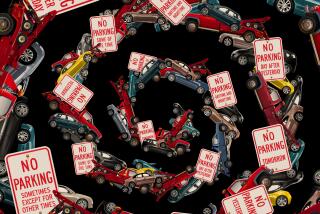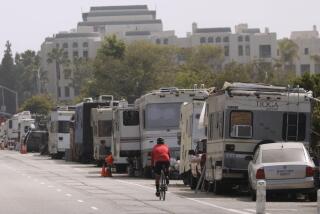Block Rush-Hour Drivers and You Will Pay, City Says
Drivers who park illegally and block lanes during rush hour -- and you know who you are -- prepare to dig deeper in your pockets to pay the resulting fine.
And to cover the service charge for the tow truck that will haul the offending vehicle away.
To help ease traffic clogs during rush hour, Mayor Antonio Villaraigosa signed an ordinance Thursday to create 23 “anti-gridlock zones” in the San Fernando Valley and metropolitan Los Angeles.
Within the zones, the fine for illegally blocking lanes during rush hour will shoot from $65 to $140. That’s in addition to a $170 tow and impound fee.
“Don’t come crying to us if you get one of these tickets,” said City Councilwoman Wendy Greuel, who introduced the ordinance at a news conference on Wilshire Boulevard, the first street to display the shiny red warning signs. Sunset and Olympic boulevards and Vermont and La Brea avenues are among those expected to follow.
Villaraigosa said the ordinance was among the “small things” the city is doing to help smooth traffic flow.
Others, he said, include stopping construction during rush hour, putting traffic officers at some of the city’s most congested intersections and dispatching a fleet of rapid-response tow trucks, known as the Tiger Team.
“Nobody wants to give you a ticket, but if you park illegally, you get a ticket and a message from the city of Los Angeles, and that is that all of us have to cooperate, have to work together, be good neighbors and park where it is appropriate,” said Villaraigosa, flanked by a dozen traffic officers.
About 6,000 signs bearing the words “anti-gridlock zone” will be installed by mid-September, said Gloria Jeff, general manager of the city’s Transportation Department. A third of the zones will cover the San Fernando Valley; the rest will cover areas of metropolitan Los Angeles, Jeff said.
Last year, the Department of Transportation issued more than 200,000 citations for cars illegally blocking lanes during rush hour.
The ordinance and new penalties will go into effect in 30 days.
More to Read
Sign up for Essential California
The most important California stories and recommendations in your inbox every morning.
You may occasionally receive promotional content from the Los Angeles Times.










